IDSS 2025 full program
The IDSS seminar program will run to AEST (Brisbane local time).
2025 Program

Marek Kowalkiewicz, Professor & Chair in Digital Economy at QUT Business School and Thinkers360 Top 100 Global AI Thought Leader
Marek Kowalkiewicz is the author of The Economy of Algorithms: AI and the Rise of the Digital Minions, winner of the 2024 Australian Business Book Award (Technology). Marek has led global innovation teams in Silicon Valley, founded SAP’s Machine Learning Lab in Singapore, and held research roles at Microsoft Research Asia. His work focuses on helping leaders understand and navigate the business implications of AI and algorithmic systems.
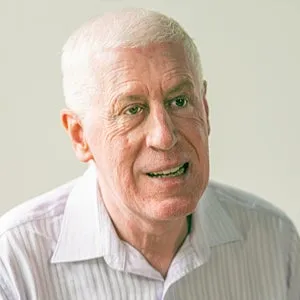
Graeme Innes AM, Chancellor of Central Queensland University & NDIS board member
Dr Graeme Innes AM was Australia's Disability Discrimination Commissioner for almost ten years. He is a lawyer, company director and author, and a long-term committed BCA member. He loves cricket and sailing and relaxes with fine Australian white wine.
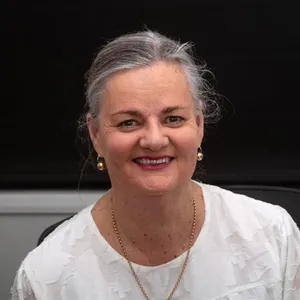
Kim Birch, Advisory services
Kim’s career spans Federal and State jurisdictions in both public and private sectors. Her senior executive roles included delivering front-line services, designing and delivering systems for people with injury and disability and regulating CTP insurers. As the inaugural CTP Regulator for South Australia, Kim established the Regulator’s Office and Regulatory model and led the development of the competitive privately underwritten CTP Scheme. Kim recently stepped down from this role to pursue new interests.

Geoff Atkins
The modern era of accident compensation schemes in Australia started in about 1985, 40 years ago. What have we learned since? Geoff Atkins is a shy and retiring actuary (well, if not shy, he is at least retiring at the end of 2025), who has worked on and observed the many changes over this period. In this session, Geoff will share the highlights and lowlights of the period, with a focus on the lessons that he has learned and the topics that can only be described still as a lesson in progress.
-The net costs of the scheme - understanding how costs have increased relative to the legacy schemes that preceded it
- The net benefits of the scheme - Looking at potential improvements across health & wellbeing , education, employment, community participation, housing and safety and judging whether any improvements can be credibly attributed to the scheme.
- Limitations on the work and thoughts on future outcomes and measurement frameworks, whereby benefits can be more consistently tracked back to scheme supports.
The analysis found material benefits around subjective wellbeing and some health measures, but several other areas where progress appears limited. We present key findings from this work, and discuss implications for the future. Our full report is public (link below), and will form the basis of the presentation. https://www.ndisreview.gov.au/sites/default/files/2023-11/Taylor_Fry_NDIS%20Review_Cost_Benefit_Analysis.pdf

Hugh Miller, Principal, Taylor Fry
Hugh Miller is a principal at Taylor Fry, where he has led a wide range of social sector projects. This includes work on people with health conditions and disability and their outcomes across domains such as welfare, education and employment. He is also an editor of Actuaries Digital, sits on the Institute’s Public Policy Committee, and was 2021 Actuary of the year.

Jason Gu, Manager, Taylor Fry
Jason is a Manager at Taylor Fry, where he advises insurers and government organisations across the health, injury, and disability sectors. He is passionate about using actuarial and analytical techniques to make sense of complex systems and guide better decisions, supporting sustainable investment and improving participant outcomes.
Chair: Jessica Lilley
The essence of the success of the It Pays to Care advocacy work is based on one of the fundamental principles of the policy, collaboration. Since the policy’s launch in 2022, we have run a number of symposiums around topics key to the domains that need to be changed to improve outcomes including psychosocial triage, employer influence and mental injury claim prevention and management. As a result of these, many practical solutions have been identified and championed by It Pays to Care working with the industry and relevant stakeholders including government, unions, self-insurers, medical and allied health associations/providers as well as through our partnership with PIEF.
Industry has readily engaged with and is calling on It Pays to Care to continue to assist with collaboration and tools to address ongoing challenges of RTW, claims costs/ durations, case manager capability, employer engagement, health practitioner impact, scheme financial viability and the rising cost of mental injury, primary and secondary.
Some examples of It Pays to Care work to date with future expansion planned include:
- Development and recent launch of a number of resources including psychosocial triage best practice guide with RTWSA, Messaging Matters tool with PIEF and insurers with others underway including CPD accredited training for doctors and employer influencing material for unions and insurers/brokers
- Sharing of best practice initiatives from government employers around the country as well as working with government employer entities to embed the principals of It Pays to Care into their claims management practices notably with Tasmania and the Northern Territory
- CTP are now wanting to engage similarly as we have done with workers’ compensation with an initial successful symposium recently held highlighting key similar issues across jurisdictions and led by evidence, strategies shared.
It Pays to Care is helping to change the field when it comes to the way claims are managed to achieve better results for injured workers and industry players. The old way was liability focus, the new way is to focus on people early (and save as it pays to care) and we see this is gradually happening around the country through our work. People are stepping into this new way, then it becomes a journey of maturity which It Pays to Care is assisting with tools and sharing of ideas and outcomes.
The proposed presentation seeks to change the hearts and minds of those who attend. It will outline the evidence based supportive approaches needed to improve return to work, highlight the measures required to monitor the effectiveness of this approach and demonstrate how collaboration and partnerships can deliver results. Key take aways will be provided for conference participants, based on the It Pays to Care work to date, to learn from and apply in their own work to develop the innovative and collaborative solutions needed for change to schemes and importantly outcomes for those injured.
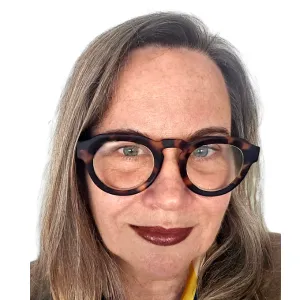
Sharon Stratford, It Pays to Care
Sharon has over 30 years of experience in workers’ compensation insurance and injury management. During most of this time, she held various senior leadership roles at WorkCover Queensland including GM for claims as well as being involved in stakeholder engagement/partnerships and injury risk reduction. Her tertiary qualifications include physiotherapy, business systems, policy and management. She has had careers in all of these disciplines during her working life as well as time away from WorkCover Queensland where she had a portfolio career managing several businesses and was involved in personal injury education, speaking and consulting activity. In acknowledgement of Sharon's long standing involvement with personal injury, she was proudly awarded the national PIEF award for outstanding contribution to the industry in 2021. Sharon is now semi-retired but still actively involved in the industry (in between travelling the world) doing national advocacy work for It Pays to Care as well as being a director of the collaborative industry initiative Steering Healthy Minds which started in Queensland, plus other things that she can add value to along the way.

Cahir: Bridget Browne, ANU/ AGA
Bridget is a leader in health and human services, especially aged care and disability, providing advice on modelling life course and financial risks supported by effective use of data analysis for the development of evidence-based policy and practice. She brings her actuarial and enterprise risk management experience together with her deep understanding of large, complex, administrative and other datasets to produce meaningful insights for policymakers. Bridget has over 35 years’ experience in Australia, New Zealand, the UK, Canada and France and is both a Certified Enterprise Risk Actuary and a Fellow of the Institute of Actuaries of Australia.
Our paper starts by considering the nature of the liabilities taken on by public sector schemes, and the concept of an illiquidity premium from IFRS 17. We explore theoretical and practical reasons for including an illiquidity premium, and how it may support matching of assets and liabilities when credit markets are under stress.
We then evaluate a range of methods proposed or used in practice to estimate the illiquidity premium and assess their appropriateness for public sector schemes. We focus primarily on the methods that were canvased in the Actuaries Institute ‘Illiquidity Premium Paper’ from 2012. We set out how to apply the approaches in an Australian context, and estimate what the illiquidity premium would be for an example portfolio that is similar to an Australian public sector workers compensation or catastrophic injury scheme. We also compare and contrast these methods with Australian private sector market practice and the method adopted by the Canadian workers’ compensation schemes.
Our findings highlight significant variation in outcomes depending on the method used, with implications for liability valuation, financial reporting volatility, and comparability across entities. The paper also considers the trade-offs between methodological complexity, data requirements, and the objective of faithfully representing the economics of long-term liabilities. Our paper concludes by considering how the choice of method might affect comparability between public sector entities in Australia and New Zealand. This paper is being prepared by the GIPC Injury and Disability sub-committee.

Kieran Leong, Insurance and Care NSW
Kieran Leong is an actuary with 14 years’ experience across Australia and UK. He specialises in injury schemes and is currently at icare. He has previously worked in consulting with clients across general insurance, injury schemes, health and disability sectors.

Augustine Sidik, KPMG
Augustine is a consulting actuary within KPMG Sydney’s General Insurance Actuarial practice. She has over 10 years of experience supporting general insurance clients across a range of areas including IFRS/AASB17, reserving, Appointed Actuary roles, capital and risk management.

Khar Mun Tang, Director at Scyne Advisory
Khar Mun “KM” Tang is a Director at Scyne and a qualified Actuary with over ten years of experience working with injury schemes and government insurers across Australia. He has provided actuarial support on a broad range of strategic and technical matters, including reserving, pricing, legislative reform, and agent remuneration. Lately, KM has been supporting schemes through their AASB 17 transition, focusing on practical implementation and its broader impacts. He’s passionate about making complex modelling clear and useful to support confident, evidence-based decisions.
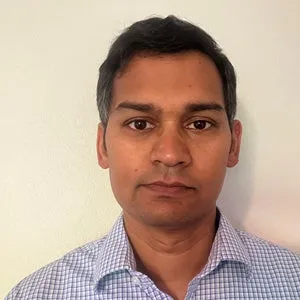
Roshane Samarasekera, ACC NZ
Roshane is a Senior Actuary in ACC’s Actuarial Monitoring & Insights team. The team produces the annual financial condition report, monitors claim performance and the impact this has on the Outstanding Claims Liability, reviews injury prevention programme performance and collaborates across the organisation on rehabilitation initiatives. Prior to joining ACC Roshane has worked in consulting and insurance supervision in New Zealand and the UK.

Chair: Francis Beens, Actuary, Finity Consulting
Francis is an actuary at Finity Consulting with nearly 20 years’ experience in general insurance and injury schemes. He has advised insurers and schemes in NSW, SA, and Queensland on both workers compensation and CTP insurance. Francis leads the GIPC Injury and Disability sub-committee.
In the Return To Work Victoria unit within WorkSafe Victoria, we’ve adopted a three-word mantra for our workplan: FOCUS, SCALE, CONTROL. We’ll share the rationale for this approach. Our experience is that most organisations can identify macro (actuarial) scheme issues, but the translation to strategic and operational intervention isn’t easy to design (SCALE, but no FOCUS or CONTROL). Similarly, organisations sometimes identify micro issues, which they can intervene on but which don’t move the scheme dial (no SCALE). We will outline how we use scheme-level analysis, including the actuarial valuation, to inform our direction and hot-spot identification. We’ll discuss how we design what we do, and then critically decide what we won’t do.

Cameron Lucas, Director of Performance for Return to Work Victoria
Cameron is the Director of Performance for Return to Work Victoria, a business unit within WorkSafe Victoria.
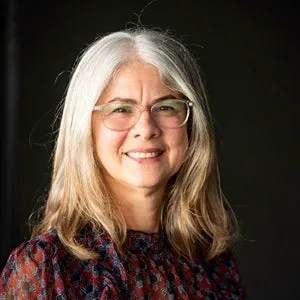
Karen Munk, WorkSafe Victoria
Karen is the Head of Performance and Operational Strategy, within the Return to Work Victoria business unit of WorkSafe Victoria.
Chair: Gavin Moore, Executive Manager Insurance, Financial Services
Ivan Lebedev, Director, Scheme Analytics and Finance
Lauren Sayer, Acting Executive Director
Chair: Paul Driessen, Principal
My projections using these trends show that the cost of workers compensation claims is likely to outpace growth of Australia’s Gross Domestic Product, 2.2% per annum projected in the IGR, by between 2% and 4% additional per annum depending on the assumptions chosen. We need to consider some new strategies to ameliorate this outcome to enable workers compensation schemes to best serve Australian workers and enterprises, perhaps anticipating the problem by adopting more effective prevention strategies and more intensive methods of returning workers to their workplace.
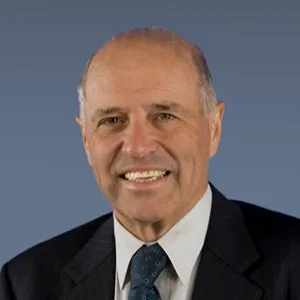
Steve Somogyi, TEQSA
Long career 1971 to 1998 at National Mutual Life including Chief Finance Executive and Chief Actuary. Commissioner of Safety, Rehabilitation and Compensation Commission from 1999 to 2023. Executive Member of APRA from 2003 to 2006. Commissioner of TEQSA 2021 to present. Chief Operating Officer at RMIT University from 2006 to 2016. Director and Chair of Guild Group until 2020. Director and Chair of Audit, Risk and Compliance Committee of UniSuper 2014 to 2023.
Chair: Raj Kanhai, Finity
This presentation will demonstrate how the model provides the LSA with a transparent, flexible, and annually updateable mechanism for setting care rates. It will also discuss how differentiating from the NDIA’s funding approach by using a clear model allows the LSA to better support participants through engaging with providers, working collaboratively to offer a responsive and individualised approach, navigating cross-scheme coordination challenges, and upholding its commitment to person-centred, outcome-driven care.
Attendees will gain insight into how scheme-specific cost modelling can enhance long-term funding sustainability, strengthen stakeholder relationships, and better serve participants through collaborative, person centred service planning.
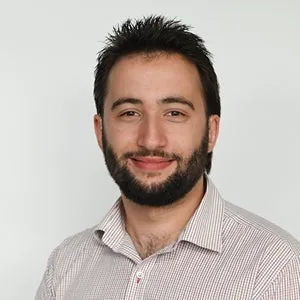
Harris Asimakopoulos, BEcon Senior Procurement Adviser, Lifetime Support Authority
Harris Asimakopoulos has over seven years of experience working across multiple South Australian Government agencies, including the Department of Treasury and Finance, the South Australian Housing Authority and now the Lifetime Support Authority. He holds a double degree in Laws and Economics from the University of Adelaide, which provides him with a practical understanding of regulatory, commercial, and financial aspects of public sector work. Harris applies this background in his day-to-day role, where he supports the delivery of fair, transparent, and sustainable procurement outcomes in a disability insurance scheme context. Across these agencies Harris has played a key role in managing procurement activities that regarding energy, construction and essential health and social services. He has been involved in supplier engagement, contract development, and developing cost models that ensure value for money while maintaining service quality. Today, Harris applies this broad and practical government experience in his role at the Lifetime Support Authority, helping to deliver procurement strategies that support person-centred outcomes for South Australians seriously injured in motor vehicle accidents. In 2023, Harris received the Making a Difference Award at the LSA’s Values Awards for his role in developing the Authority’s Reasonable Cost Model for attendant care. The award recognised his practical approach, persistence, and focus on creating a tool that would support long-term planning and transparent pricing for care services. His work was also put forward for consideration in the South Australian Premier’s Excellence Awards.
Sharon Cates, Lifetime Care SA
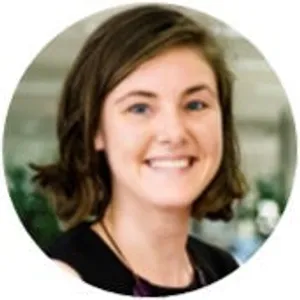
Chair: Claire White, Senior Consultant at Finity Consulting
Claire White has over 15 years of insurance and personal injury experience. Claire is a Senior Consultant at Finity and specialises in accident compensation, disability and lifetime care. Claire has worked as an actuarial advisor to a range of government and non-government institutions in the accident compensation and disability space. Claire is especially passionate about schemes that help people with lifelong injuries and serious disabilities and is excited about the expanding role actuaries have in contributing to positive social outcomes.
This submission will include:
An overview of the disease
Potential exposures and risks
Recent developments related to silicosis
Control measures
Furthermore, icare NSW has continued to refine its internal silicosis modelling, and would be happy to discuss:
The role of insurance and Workers’ Compensation with respect to silicosis
Methodology
Challenges and workarounds
Implications on future exposures

Tim Rao, Senior Analyst, icare NSW
Tim is a senior analyst at icare NSW, and has worked on a range of projects in the health and disability space. He has been involved in the Dust Diseases Care valuation since 2021. Most recently, Tim has undertaken a full review of silicosis claims in NSW and developed a new approach towards projecting future dust diseases.
Chair: Jas Singh, SKL
In December 2019, the Motor Accident Insurance Commission (MAIC) introduced reforms to the Motor Accident Insurance Act 1994 to ban the farming of CTP insurance claims in Queensland. The reforms make it illegal for scammers to contact potential claimants to obtain personal information for a CTP insurance claim. Further, lawyers must now declare that they have not paid a claim farmer for a claim throughout the claims process.
The reforms have reportedly been successful:
- Claim farming notifications from Queenslanders continued to trend down from more than 1,300 complaints in 2019 to 27 reported in 2023–24.
- There have been successful prosecutions under the reforms, including the Brisbane Magistrates Court sentencing an Australian company to fines totalling $1 million. The sentence was the first for claim farming-related offending in Australia.
- The scheme has also seen marked decreases in claims frequency since 2018, partly attributed to the success of the reforms.
In this paper we present the results of an evaluation study of the effectiveness of the claims farming reforms. A key focus is the quantification of the cost benefits to the Scheme because of the reforms by identifying the claim segments most impacted by the claims farming reforms. We will also consider the broader context of claims farming in Australia including the NSW Claim Farming Practices Prohibition Act 2025, which came into effect on 9 April 2025 and which to prohibit claims farming in NSW. This Act explicitly excludes some personal injury claims, including CTP and workers compensation claims, and the Insurance Council of Australia has raised concerns in relation to this exclusion.
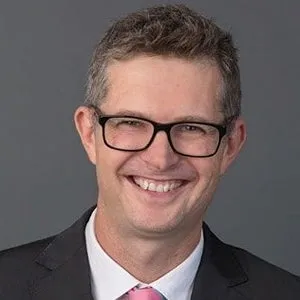
Peter Mulquiney, Principal, Taylor Fry
Peter is a Principal at Taylor Fry and has more than 20 years’ experience providing advice to injury schemes and regulators, and heading analytics projects for government and corporate clients in Australia and New Zealand. He provides consulting advice in two broad areas: actuarial advice to executives, managers, and regulators of injury schemes; and data science and analytics support to government departments in the areas of social policy and operational management.

Danielle Ling, Director, Taylor Fry
Danielle has extensive experience in advising accident compensation schemes, general insurers, large corporations and government organisations since 2011. Highly experienced across premium setting, liability reserving and capital modelling, she specialises in providing tailored strategic advice for both short-tail and long-tail classes. Examples of her work include guiding state regulators to manage their workers compensation, catastrophic injury and compulsory third party funds. She also works closely with self-insurers responsible for liabilities across six of the seven Australian jurisdictions.

David Vincent, General Manager of the Motor Accident Insurance Commission
David has over 30 years’ insurance experience including roles in personal injury claims management and underwriting, along with positions involving insurance regulation and government policy development. David is responsible for leading the strategic management of the Nominal Defendant claims unit and managing MAIC’s Regulatory functions including the supervision of licensed insurers and claim farming investigations & prosecutions.

Chair: Vivian Tse, EY
Vivian Tse is a Partner at EY and has over 20 years of experience in general insurance and injury schemes. During that time, Vivian has been heavily involved in scheme reviews and change processes in multiple jurisdictions, covering regulatory considerations, premium system design as well as on the claims side. She is passionate about initiatives and opportunities that improve outcomes for injured people and the community.
David Gifford, Scheme Actuary
Stewart McRobie, Deputy Chief Executive, Corporate & Finance
Chair: Paul Driessen, Principal
The presentation will consider recent and upcoming reviews, recommendations and reforms regarding pricing across aged care and disability in Australia, including the transition of aged care pricing responsibilities to the Independent Health and Aged Care Pricing Authority (IHACPA), the new arrangements for in-home aged care and the report of the Independent Pricing Committee established by the National Disability Insurance Agency (NDIA). It will explore these pricing frameworks and associated policy choices and highlight similarities, differences, overlaps and potential impacts and opportunities.

Bridget Browne, ANU/ AGA
Bridget is a leader in health and human services, especially aged care and disability, providing advice on modelling life course and financial risks supported by effective use of data analysis for the development of evidence-based policy and practice. She brings her actuarial and enterprise risk management experience together with her deep understanding of large, complex, administrative and other datasets to produce meaningful insights for policymakers. Bridget has over 35 years’ experience in Australia, New Zealand, the UK, Canada and France and is both a Certified Enterprise Risk Actuary and a Fellow of the Institute of Actuaries of Australia.
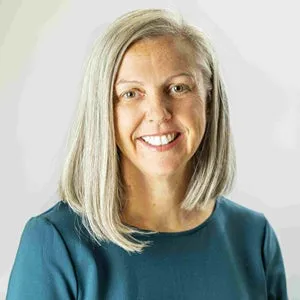
Chair: Kylie Smith, LSA
Kylie is a disability sector leader and clinician, who is passionate about all people living life to the fullest. She is the Director of Services at the Lifetime Support Authority in South Australia. With a depth of understanding and experience Kylie ensures person centred practice is embedded at the LSA and that independence and autonomy are always on the agenda of people living with serious injuries. Pursuing the best outcomes for seriously injured people is at the centre of Kylie’s work.
- Health, income and other socioeconomic characteristics before and after accident compensation receipt
- Income pathways (including changes of employment and welfare receipt) for people post-injury
- Health pathways (including both mental and physical health ratings as well as quality of life ratings) for people post-injury.
The use of both broader wellbeing and quality of life measures combined with examination of both immediate outcomes and longer-term pathways makes this study unique. It will contribute to a more joined-up view of potential gaps in support for injured workers, supporting systems level thinking.

Hugh Miller, Principal, Taylor Fry
Hugh Miller is a principal at Taylor Fry, where he has led a wide range of social sector projects. This includes work on people with health conditions and disability and their outcomes across domains such as welfare, education and employment. He is also an editor of Actuaries Digital, sits on the Institute’s Public Policy Committee, and was 2021 Actuary of the year.
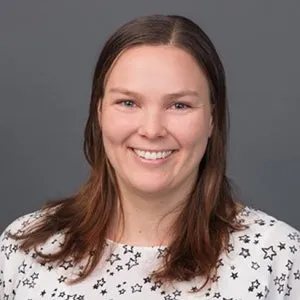
Laura Dixie, Director, Taylor Fry
Laura Dixie is an experienced actuary and a director at Taylor Fry consulting. She works in Taylor Fry’s Government practice using quantitative analysis applied to a range of datasets to understand how people interact with services in the health, disability and social sectors. This often means using linked datasets and statistical analysis to support government in making sustainable decisions that benefit community.

Chair: Somya Ohri, Scyne Advisory
Somya brings over a decade of experience in the general insurance industry through diverse engagements including valuations, capital modelling, and claims analytics. A recognised specialist in AASB 17, Somya has supported both public and private sector clients in their end-to-end technical and operational implementation of AASB 17. Building on her deep understanding of regulatory transformation, she has expanded her advisory focus to support public sector entities on their climate risk management and net zero transition. She is deeply committed to delivering value through data-driven insights and is trusted by clients for her ability to make the complex simple—whether implementing AASB 17 or navigating the new frontier of climate regulation.
Minh Phan, Head of AI Innovation, Finity Consulting
Minh is the Head of AI Innovation at Finity, focussing on everything from ideation, training, tooling, governance and development of practical applications. With 14 years of experience in pricing and data science, he has built production data pipelines, ML powered dashboards, and custom AI solutions across a range of cloud platforms. He is known for making complex technical ideas accessible and engaging through his presentations.
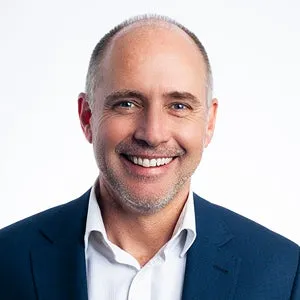
Aaron Cutter, Finity Consulting
Aaron has 30+ years’ experience in accident and disability insurance including ten years as the external Scheme Actuary for Lifetime Support Authority and eight years working at the Transport Accident Commission in Victoria. He is an expert in accident compensation schemes across reserving, pricing and capital management particularly in motor injury insurance (CTP, no fault and catastrophic injury). Aaron is currently LSA’s, TAC’s, NIISQ’s and ACT LTCSS’s Scheme Actuary. As Finity’s lead on COVID-19 advice and modelling he provided case and hospitalisation number projections and mobility trend analysis for NSW, Vic, Qld and New Zealand health departments/ministries. He has extensive experience providing advice in relation to big data, analytics and statistical insights to compensation schemes, insurers, regulators and government departments and agencies. He leads the Actuaries Institute Data Science Education Faculty and actively contributes to Finity’s IP development in this space.
Chair: David Gregory, Head of Portfolio Performance, Personal Injury Division
Currently, e-scooters and e-bikes are not required to be registered and therefore users cannot purchase CTP insurance, yet their increasing presence on our roads may significantly impact the CTP scheme. In this session we will analyse the trends, user demographics and types of injuries commonly associated with e-micromobility devices and explore the potential implications for the NSW CTP Scheme. Attendees will leave with a comprehensive understanding of the challenges and considerations that e-micromobility presents for CTP insurance in Australia.

Ning An, Senior Manager at EY
Ning An is a Senior Manager at EY with over 10 years of experience in general insurance. She specialises in scheme actuary functions for CTP schemes and has broader industry experience across workers compensation and home building funds through roles in corporate insurance and scheme audits. Ning is passionate about staying ahead of emerging trends and understanding how innovation impacts injury schemes. Her presentation explores the influence of micromobility devices on the NSW CTP scheme.
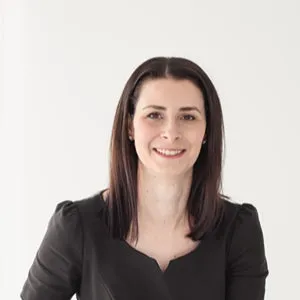
Belinda Ernst, Policy Manager, SIRA
Belinda has over 15 years of experience across Federal and NSW governments, leading policy, economic development, and investment attraction initiatives in the insurance, defence, advanced manufacturing, and technology sectors. She is currently a Policy Manager at the State Insurance Regulatory Authority, where she focuses on the Compulsory Third Party insurance scheme.
Chair: Ivan Lebedev, Director, Scheme Analytics and Finance
Mark Arnott
Dai Lui, Chief Actuary
Chair: Andrew Smith, Scyne
We present a multi-jurisdictional exploration of how PTSD is diagnosed, treated, and managed within Australian workplace and transport compensation systems. Drawing on recent legislative reforms, medical models of care, and operational claim management practices, we explore the tension between facilitating access and maintaining scheme sustainability.
We discuss:
- The evolution of PTSD recognition in Australian compensation schemes
- Early intervention and presumptive PTSD laws for first responders, including effectiveness and unintended consequences
- Integrating trauma-informed care with vocational rehabilitation
- Eligibility thresholds, impairment tests, and the role of psychosocial hazard regulation
- Medicalisation, stigma, cost and compassion.
We intend to use examples from recent reforms – including Victoria’s provisional payments, Queensland’s presumptive legislation, and NSW’s mental health claim management reforms – to explore what “value” looks like when supporting recovery from PTSD in compensation systems.
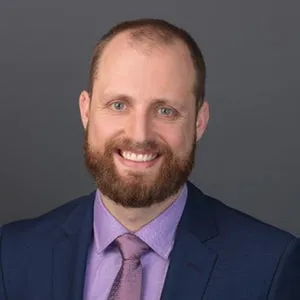
Ash Evans, Principal, Taylor Fry
Ash is a Principal at Taylor Fry, with almost two decades of experience in the injury schemes and public health sectors. He has been the scheme actuary for Comcare since 2017 and for the South Australian CTP Insurance Regulator since 2021. With a particular focus on the impacts of psychological injury and its management, Ash has deep expertise in providing mental health insights to support decision makers with a robust evidence base as they develop and review scheme initiatives.

Hansi Weerasooriya, Taylor Fry
Hansi provides actuarial advice in the workers compensation and public health sectors. She assists in the valuation of liabilities and funding forecasts for the Australian Government’s workers compensation scheme and was recently involved in the costing of future workers compensation reforms affecting the Safety, Rehabilitation and Compensation Act 1988. In other work, Hansi is involved in undertakes quality assurance of Australia’s hospital funding models, data visualisations of health costing data and predictive modelling.
Chair: Andrew Houltram, Head of Analytics & Reporting
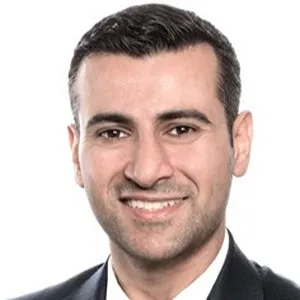
Danny Rouel, Director at EY
Danny Rouel is a Director in EY’s General Insurance actuarial practice, bringing over 18 years of experience in the general insurance industry. He has deep expertise in motor injury and workers compensation schemes, having worked extensively in both corporate insurance roles and consulting. Danny’s work spans valuations, insurance pricing, and risk management, with a strong focus on delivering strategic insights and regulatory support. He has led engagements with key stakeholders across Australia, including State regulators and insurers.
Bronwyn Martin, SIRA

Thom Quinn, Transport Accident Commission
Thom Quinn is a biologist-turned-statistician currently working as a data scientist at the Transport Accident Commission (TAC). He is interested in, and motivated by, the potential for using electronic medical records and machine learning to improve health outcomes.
Chair: Raj Kanhai, Finity
- Advancements in road safety over time
- Scheme reforms and legislative change
- Shifts in community behaviours and expectations, such as changing mobility patterns during and after COVID and increased recognition of psychological injuries
- The role of regulator and societal expectations regarding profit
From this analysis we will summarise the lessons learned and the implications for the future sustainability of CTP schemes given some of the changes ahead, such as. micromobility trends, new vehicle technologies and applications of AI.

Timina Liu, Consultant, Finity Consulting
Timina Liu is a Consultant at Finity Consulting and a member of Finity’s CTP centre of excellence. She regularly writes articles on trends in CTP schemes covering frequency and pricing as well as changes to the CTP eco-system.
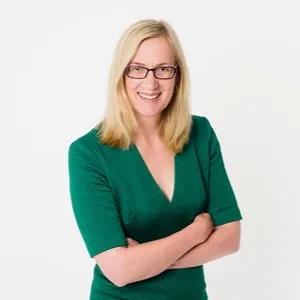
Estelle Pearson, Director, Finity Consulting
Estelle Pearson is a Director of Finity Consulting and has worked with CTP schemes over the last 30+ years advising insurers and regulators on scheme design and reform.
Chair: Laura Wood, Head of Reinsurance and Appointed Actuary
Chris White
Mandy Young, Chief Executive
Chair: Natasha De Souza, Director, Actuarial Services

Estelle Pearson, Director, Finity Consulting
Estelle Pearson is a Director of Finity Consulting and has worked with CTP schemes over the last 30+ years advising insurers and regulators on scheme design and reform.
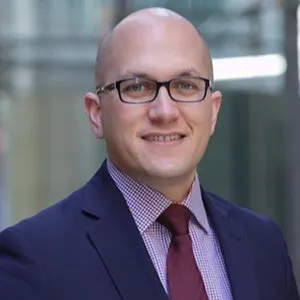
Jason Lardelli, Executive Director, Return to Work Victoria
Jason joined Worksafe Victoria in July 2023

David Bacon, General Manager People Risk Claims (CTP&WC), QBE Australia
David’s background is in community healthcare delivery where he worked in private practice for the first years of his career. After completing his post grad, he moved into insurance over 20 years ago. Over his time in insurance he has managed risk, actuarial, research, claims, and healthcare functions. For the last 9 years, David has been the General Manager of People Risk Claims (CTP & WC) claims at QBE. David and his team approach this work focusing on really helping people bring their life back together after an injury. They do this in collaboration with a range of progressive and healthcare, analytics, and academic partners. Much of his recent work has focused on healthcare delivery in the context of compensation schemes.

Kim Birch, Advisory services
Kim’s career spans Federal and State jurisdictions in both public and private sectors. Her senior executive roles included delivering front-line services, designing and delivering systems for people with injury and disability and regulating CTP insurers. As the inaugural CTP Regulator for South Australia, Kim established the Regulator’s Office and Regulatory model and led the development of the competitive privately underwritten CTP Scheme. Kim recently stepped down from this role to pursue new interests.
Sharon Stratford, It Pays to Care
This session aims to give a voice to these parties. It explores how participant outcomes can be improved through enhanced coordination across the wider ecosystem and a more holistic participant experience. Michele Sterling (Centre of Research Excellence in Better Health Outcomes for Compensable Injury) and Matthew Ames (Non-executive Director) bring a unique mix of experiences to discuss innovations occurring in their space, current barriers and challenges, and potential solutions to better connect ecosystem components.
By painting a picture of the wider ecosystem, you'll have an opportunity to ponder and design scheme improvements in a more holistic manner.
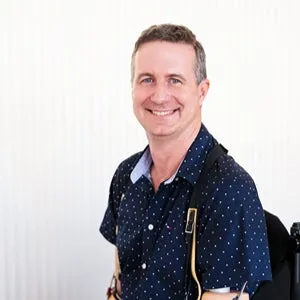
Matthew Ames, Non-executive Director
Matthew was 39 years old when what started as a sore throat resulted in sepsis and the loss of all four of his limbs. With an amazing team around him, including family, friends, the community and many in the healthcare sector, Matthew has made a remarkable recovery and is determined to make a difference in the lives of others facing similar challenges. Matthew has a unique mix of professional and personal experience. After almost 20 years in the energy and resources industry, he is now involved in a variety of endeavours. His board roles include the chair of Hear and Say, in addition to serving on several other boards, including the Metro South Hospital and Health Board and Centacare. His advocacy work focuses on the prevention and treatment of sepsis with Sepsis Australia and Queensland Health.

Michele Sterling, Professor in the RECOVER Injury Centre and Director of the NHMRC Centre of Research Excellence: Better Health Outcomes for Compensable Injury, The University of Queensland, Australia
Michele is Professor in the RECOVER Injury Centre and Director of the NHMRC Centre of Research Excellence: Better Health Outcomes for Compensable Injury, The University of Queensland, Australia. She is a NHMRC Leadership (L2) Fellow and a Fellow of the Australian College of Physiotherapists. Michele’s research focusses on the mechanisms underlying the development of chronic pain injury, predictive algorithms for outcomes and developing effective interventions for musculoskeletal injury and pain. She has over 300 peer-reviewed publications in this area and received >$40M in funding from the NHMRC, MRFF and industry partners. Michele is a Section Editor of Pain, was chair of the Scientific Program Committee for the World Congress on Pain in Amsterdam, 2024 and sits on the Executive Committee as Secretary of the International Association for the Study of Pain.
Nick Kendrick, Clinical Innovation Manager
Nick Kendrick is the Clinical Innovation Manager of Axis; a national workplace healthcare company. Nick is a Titled Musculoskeletal Physiotherapist with 15 years’ experience working as a clinician, lecturer and researcher. As Clinical Innovation Manager, Nick is responsible for developing, planning, operationalising and managing new services at Axis. In the past four years, this has included developing a rapid-response program for whiplash patients with CTP claims, a nation-wide pre-claim early intervention program for a large national supermarket chain that supports 6,000 new cases per year, and a matched-care, early psychosocial support program with two self-insurers.

Xi Lin, Taylor Fry
Xi Lin became a Fellow of the Institute of Actuaries of Australia (FIAA) in 2019 and has since held roles as a consultant and manager at Taylor Fry. Her experience spans a wide range of projects across injury schemes (CTP and worker’s compensation), government, and analytics. She holds a PhD in Statistics from the University of Oxford, specialising in causal inference. Her research combines theoretical methodologies with industry collaboration to ensure practical, impactful outcomes. Xi has now returned to Taylor Fry, where she focuses on applying causal inference to draw insights from data that support high-stakes decision-making.

Ramona Meyricke, Taylor Fry
Ramona Meyricke chairs the Institute’s Climate and Sustainability Practice Committee. Ramona has over 15 years' experience in actuarial consulting, risk management and research roles, across the superannuation/pensions, insurance, and government sectors. Her work focuses on managing long-term financial risks, including climate and sustainability risks, by applying research, actuarial and analytics techniques. In her current role as Director, Policy and Research at IFM Investors, Ramona leads research and analysis supporting IFM’s thought leadership, policy advocacy and strategic initiatives on climate change, energy and infrastructure and pensions. She holds a PhD in Financial Economics from the University of Cambridge, Bachelor of Science (Finance and Statistics) with First Class Honours and the University Medal from The Australian National University.
Chair: Tom Moulder, Taylor Fry

Danny Rouel, Director at EY
Danny Rouel is a Director in EY’s General Insurance actuarial practice, bringing over 18 years of experience in the general insurance industry. He has deep expertise in motor injury and workers compensation schemes, having worked extensively in both corporate insurance roles and consulting. Danny’s work spans valuations, insurance pricing, and risk management, with a strong focus on delivering strategic insights and regulatory support. He has led engagements with key stakeholders across Australia, including State regulators and insurers.

Emily Wooden, Manager of Regulatory Policy within the State Insurance Regulatory Authority
Emily Wooden is the Manager of Regulatory Policy within the State Insurance Regulatory Authority. With a degree in Law (Hons) and Fine Arts, Emily has acquired substantial expertise in law and public policy, particularly in the NSW personal injury schemes, providing advice to senior public servants and state government Ministers. Emily has led a number of key policy projects and reform initiatives, diving into policy projects and providing clear and effective solutions in a dynamic and complex environment. This included leading the 2022 reforms to the NSW Compulsory Third-Party (CTP scheme) and broader Government response to the first Statutory Review of the Motor Accident Injuries Act 2017.
Chair: Kylie Hogan, Work Safe Victoria
Gaenor Walker
David Vincent
Chair: Khar Mun Tang, Director, Actuarial & Modelling
Samantha Cockfield, Executive General Manager Road Safety
Katherine Gobbi, Executive General Manager Clients
Chris Rymer, QBE
Tracking long term outcomes for injured workers is typically very difficult for insurers and compensation schemes as limited data is collected for injured workers once their interactions with the scheme cease. Workers’ future interactions with employers, social welfare and health systems are not visible to schemes so developing holistic policies is a big challenge.
This study aims to address these challenges by investigating long-term outcomes for injured workers using data from the Household Income and Labour Dynamics (HILDA) survey. HILDA survey data contains a wide range of data measures for individuals and households over a long time frame and so offers a valuable data source for a holistic view of individuals’ health and economic wellbeing.
In our analysis we will use longitudinal data analysis methods to measure the health, employment and financial wellbeing measures of workers who have had time off work due to workplace injury. We will use causal inference methods to construct a pseudo control group of workers who have not experienced workplace injury to enable a like-for-like comparison which will lead to insights into the causal effect of workplace injury. Further insights will be available on the social and economic predictors of workplace injury.
These insights will prove useful to policy makers for scheme design by enabling a fuller view of all the costs due to workplace injury to be put into a single view as well as information about where these costs may end up in other parts of the system (welfare, health etc.)
Outputs of this research could feed into initiatives that track injury recovery outcomes beyond the compensation system—for example, into welfare dependency, employment, housing, or quality of life i.e. for a “whole-of-system outcomes framework” or “integrated outcomes monitoring”.

Michael McLean, Finity Consulting
Chair: Natasha De Souza, Director, Actuarial Services
By drawing upon workers compensation data and research findings we can paint a rich picture as to why and how the industry ended up in this position. Long working hours, sedentary work, vast geography, and interactions with other road users are among some of the reasons. However, when it comes to understanding the way out, the picture is not so clear. As an insurer, raising the industry premium rate could cover increasing costs, however, this may lead to further strain on transport organisations, rather than helping them to address the root causes of injury & ill-health. Furthermore, the cost of doing nothing extends beyond scheme and employer viability, to widespread supply chain disruptions.
ReturnToWorkSA felt well placed to partner with the industry to co-design and trial viable solutions through our Healthy Workplaces Program. This program was born out of RTWSA’s participation in the South Australian Collaborative Partnership for Workplace Health & Wellbeing, and takes a holistic approach to health, safety & wellbeing at work. The Transport stream of our program has two key initiatives. Firstly, we have recruited ‘Industry Champions’ through a grant process. These Champions are stepping through a needs assessment and intervention design cycle with the aid of a Healthy Workplace advisor. Secondly, RTWSA has partnered with the Transport Industry Association, SARTA, to deliver capability building workshops for the sector. This initiative included surveying the sector to identify topics of interest for them.
RTWSA would welcome the opportunity to share more information about our transport industry initiatives, from concept to implementation – including specific insights from our industry champions and our strategy for evaluating effectiveness.
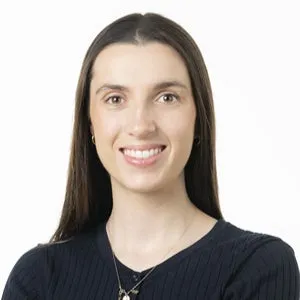
Amanda Sadauskas, Physiotherapist and Healthy Workplace Advisor within Employer Risk Services at ReturntoWorkSA
Amanda provides a free consultancy service to employers in a selection of high-risk industries including transport, healthcare and social assistance and hospitality. She also works closely with the Industry Associations in these sectors, as well as the Apprentice Sector, to improve health, safety, and wellbeing outcomes. Prior to her current role, Amanda worked clinically as a physiotherapist supporting injured workers through their recovery and return to work. During this time, she came to see the importance of a healthy and supportive working environment for both preventing injury and enabling a successful return to work. This prompted her to undertake a Masters in Ergonomics, Safety & Health through La Trobe University, which she completed in 2023.
A question is thus posed on the extent the rising (and potentially unsustainable) cost of psychological injury claims is an Australia specific problem, rather than simply a reflection of changes in global workforce, demographics and cultural attitudes.
What prompted this question is the recent research into the prevalence of autism, that highlighted that Australia's high rates of diagnosis may actually be influenced by the system (eg awareness, diagnosis, support structure), rather than just inherently higher rates of occurrence.
Our research aims to explore how psychological claims arise and are managed in overseas schemes, including those in the USA and Europe. We will examine whether there are differences in elements such as:
• Workers compensation outcomes (frequency, size)
• Scheme/compensation design and support mechanisms
• Definitions
• Awareness and diagnosis
• Cultural factors
• Prevention activities
By comparing the above, we aim to gain insights into the levers for change and potential improvements for the Australian system. We will be looking for bodies of research available on overseas jurisdictions supplemented by views from professionals in overseas jurisdictions.

Vivian Tse, EY
Vivian Tse is a Partner at EY and has over 20 years of experience in general insurance and injury schemes. During that time, Vivian has been heavily involved in scheme reviews and change processes in multiple jurisdictions, covering regulatory considerations, premium system design as well as on the claims side. She is passionate about initiatives and opportunities that improve outcomes for injured people and the community.
Chair: David Gregory, Head of Portfolio Performance, Personal Injury Division
As public sector injury schemes progress through transition, this session will share real-world insights into the process changes, implementation effort and challenges, and emerging benefits. We will highlight how schemes are adapting processes such as roll-forward calculations, premium or levy earnings, and reinsurance mechanisms to align with AASB 17 requirements.
Beyond compliance, we will explore how AASB 17 can serve as a platform for operational improvement—streamlining reporting, enhancing data governance, and enabling more robust financial and performance insights.
A key enabler of sustainable implementation is education—supporting directors, executives, and staff to build the knowledge and confidence needed to operationalise AASB 17 effectively. We will also address the question: What does AASB 17 look like as business-as-usual? This includes a forward-looking view on how budgeting, management reporting, performance metrics (KPIs) must evolve to ensure the sustainability and value of the new operating model post implementation of AASB 17.

Somya Ohri, Scyne Advisory
Somya brings over a decade of experience in the general insurance industry through diverse engagements including valuations, capital modelling, and claims analytics. A recognised specialist in AASB 17, Somya has supported both public and private sector clients in their end-to-end technical and operational implementation of AASB 17. Building on her deep understanding of regulatory transformation, she has expanded her advisory focus to support public sector entities on their climate risk management and net zero transition. She is deeply committed to delivering value through data-driven insights and is trusted by clients for her ability to make the complex simple—whether implementing AASB 17 or navigating the new frontier of climate regulation.

Michael Burns, icare NSW
Michael is accountable to deliver the AASB 17 project for icare. For the last two and half years he has journeyed with his dedicated AASB 17 project team through the many challenges and learnings that such a project presents. Having worked in the insurance industry throughout his career, via audit (external and internal) and the last decade as a financial controller, he has a unique perspective on the implementation of AASB 17 and is looking forward to sharing this with you.

Chair: Kieran Leong, Insurance and Care NSW
Kieran Leong is an actuary with 14 years’ experience across Australia and UK. He specialises in injury schemes and is currently at icare. He has previously worked in consulting with clients across general insurance, injury schemes, health and disability sectors.
Janene Hillhouse, Executive Director, Workers’ Compensation Regulatory Services
Michael Pennisi, CFO
Chair: Peter Mulquiney, Principal
https://assets-au-01.kc-usercontent.com/4f4649d8-6df9-023d-bb6c-14e842b8aadb/36e3d175-9f07-42c3-9218-aed3fc28baa1/Peter%20Mulquiney_Concurrent%20Presenter%20Photo.jpg
The changing disability care environment and consequences for sustainability
The disability care environment has evolved significantly over the past decade, driven by deinstitutionalization, the roll out of the National Disability Insurance Scheme (NDIS), and societal changing expectations relating to dignity and human rights. For lifetime care schemes supporting the most seriously injured participants, these shifts have implications for care decision-making and care costs. This presentation intends to survey lifetime care schemes across Australia to explore how the definition of ""reasonable and necessary"" care may have changed for participants requiring the most significant attendant care supports. The aim is to identify if care planning has changed, any key factors driving this and areas schemes can monitoring for risks and opportunities.
Data-Driven Innovations in Attendant Care and Support: Ensuring Sustainability and Productivity
The National Injury Insurance Scheme Queensland (NIISQ) is at the forefront of leveraging data-driven insights to enhance the delivery of Attendant Care and Support (AC&S) services. Recognising the critical role of AC&S, which constitutes 82% of non-expense costs within the scheme, the NIISQ Agency has embarked on an innovative project to uplift its analytical, operational, and financial processes. This presentation explores the findings from a comprehensive review of AC&S, revealing key challenges such as coding errors, data inconsistencies, and significant service and rate variations across the industry. The project highlights the value and importance of ACS data drive decision making, streamlined internal operational processes, and enhancing data quality through system improvements. The presentation will also provide high level findings from a pilot with statewide brain injury service to enhance outcomes for participants. We aim to provide insights on challenges and share the learnings.

Kylie Smith, LSA
Kylie is a disability sector leader and clinician, who is passionate about all people living life to the fullest. She is the Director of Services at the Lifetime Support Authority in South Australia. With a depth of understanding and experience Kylie ensures person centred practice is embedded at the LSA and that independence and autonomy are always on the agenda of people living with serious injuries. Pursuing the best outcomes for seriously injured people is at the centre of Kylie’s work.
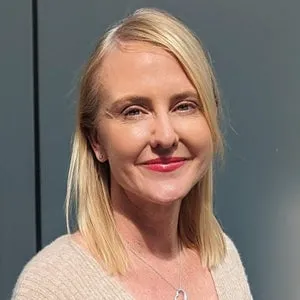
Genevieve Lee, NIISQ

Claire White, Senior Consultant at Finity Consulting
Claire White has over 15 years of insurance and personal injury experience. Claire is a Senior Consultant at Finity and specialises in accident compensation, disability and lifetime care. Claire has worked as an actuarial advisor to a range of government and non-government institutions in the accident compensation and disability space. Claire is especially passionate about schemes that help people with lifelong injuries and serious disabilities and is excited about the expanding role actuaries have in contributing to positive social outcomes.

Chair: Cameron Lucas, Director of Performance for Return to Work Victoria
Cameron is the Director of Performance for Return to Work Victoria, a business unit within WorkSafe Victoria.
To describe the conceptual and methodological approach to the Workers Voice project: A national research project aimed at identifying and rigorously testing solutions to design and administrative challenges in workers’ compensation identified by injured workers.
To describe the development, testing and validation of the computational social system models used in the Workers Voice project, including a system dynamics model and an agent-based model of a ‘generic’ Australian workers’ compensation system.
To describe the high priority solutions identified by injured Australian workers to scheme design and operation, including in the areas of: i) collection and use of medical evidence; ii) communication between stakeholders during a claim; and iii) the financial impacts of claiming on the worker.
Background:
Australia’s no-fault workers’ compensation systems offer wage replacement, medical treatment, and rehabilitation for injured or ill workers who have submitted accepted compensation claims. Historically, Australian workers have been passive recipients rather than active participants in the design and operation of workers’ compensation systems, leading to a misalignment between their experiences and preferences and system rule, processes and practices. Many research studies provide a strong evidence base that interactions with workers’ compensation systems can lead to, or exacerbate psychological distress of workers. Many workers perceive the administrative processes involved in distributing these systems to be opaque, intricate, and difficult to navigate. In turn this can both stifle recovery, slow return to work and increase costs of claim.
Incorporating user-driven perspectives within the design and operation of compensation systems may serve a dual function in both i) increasing the satisfaction of workers with their claims experience and reducing the likelihood they will experience iatrogenic system related stress; and ii) improve the overall effeciency and functionality of the system.
The Workers’ Voice project, funded by the Australian Research Council and led from Monash University, is a novel program of research dedicated to identifying challenges to workers recovery, and generating solutions to those challenges, driven by those with direct experience of the Australian workers’ compensation systems. The project seeks to maximise the benefits of user-driven improvements while simultaneously foreseeing potential complications of system adjustments. The project incorporates qualitative and quantitative data collection, with computational social systems modelling techniques, to develop and test solutions identified as high priority by injured workers.
Methods:
The initial stages of the project (2024 to mid 2025) occurred in two concurrent phases. Phase 1 involved a multi-method approach of collecting insights from injured workers and their key informants (family members, friends, supporters) via surveys, text and graphical submissions, in-depth interviews, and co-design workshops. This program of work was developed to gather detailed insights on how workers were impacted through navigating compensation systems, what specific challenges they faced in doing so, and what solutions they proposed to address these challenges. In 2024 and 2025, direct and continuous involvement from injured workers and their support networks was solicited via a quantitative survery of 553 injured workers, in-depth interviews with 35 workers and their supporters / key informants.
In Phase 2, two computational models were developed to represent ‘current state’ workers’ compensation system in Australia. These include a system dynamics model and an agent based model (ABMs). ABMs enable the construction of computational representations of real social systems and phenomena. ABMs can be used to represent sophisticated and often complex systems that are too difficult to understand using traditional statistical or mathematical models. The are particularly useful for investigating complex systems that are made up of many actors, relationships, processes and levels. Hence, they are usefully applied to the area of workers compensation systems. System Dynamics (SD) Models are different to ABMs in that they do not easily differentiate between individuals (e.g., individual workers), but instead will clearly identify the stages that groups of individuals may pass through in a system (e.g., people with this type of injury take path A, people with that type of injury take path B). SD models tend to create a view of the world that is described in terms of ‘stocks’ and ‘flows’, but like volumes of water running through and between reservoirs or tanks.
Results:
The presentation will provide a summary of key findings from the first stage of the projec,t and next steps involved in testing solutions identified by injured workers.
Over 550 Australian workers and key representatives of their support networks have so far participated in primary data collection through various means, mostly through survey submissions and in-depth interviews. Key areas of improvement (with potential solutions) identified concerned the collection and use of medical evidence, insurer communications, clarity of information, financial impacts, development of a mental health focused claim model, support pathways for system exit and return to work, and strengthening of regulation for insurers and other providers. Key actors and events within compensation systems that can generative negative or positive experiences and outcomes for workers were identifed as insurance claims managers and employers/supervisors, as well as the time waiting for initial claim adjudication. Findings from analysis of survey responses and thematic analysis of interview transcripts will be presented.
Model development involved multiple iterative steps of collaboration between the modelling team and experts – in particular, Lived Experience Advisors and compensation scheme experts. The process began with the construction of a comprehensive document which would later form the basis for the SD model. The document contained a description of each stage of the workers’ compensation process including pre-claim submission, liability determination, service provision, disputes, return to work, and scheme exit. This document was reviewed and modified by subject matter experts. The ABM was built using information gathered from a series of expert interviews, qualitative interviews, and scheme-specific and publicly available data. Validation of both ABM and SD models occurred through i) incoprorating substantial existing data into models (eg, from analysis of public workers compensation statistics and prior purblished research evidence), 2) comparison of model outcomes with existing or historical scenarios, and 3) expert input.
Simulated model outcomes utilising workshopped solutions will be illustrated through modelled user journeys detailing injured worker satisfaction and work capacity, and system sustainability.
Conclusions: This presentation will illuminate how user-centred data can inform development of current and reimagined compensation systems in a simulated model environment. This innovative research project is ongoing, and now entering the phase of testing user-generated solutions in the validated virtual system models.

Samineh Sanatkar, Monash University
Dr Sanatkar is a psychologist and research fellow in workplace injury. She supports the Workers’ Voice project, a research program aimed at designing a consumer-led workers’ compensation system. She recently completed a fellowship sponsored by the New South Wales State Insurance Regulatory Authority during which she examined facilitators and barriers of work-related psychological injury. Dr Sanatkar has published 32 peer-reviewed research articles and is first author of a chapter in the 2021 white paper Modern work: How changes to the way we work are impacting Australians’ mental health.
Participants will gain insights into key concepts in climate risk assessment, emissions baselining, net zero strategy—alongside practical strategies for integrating these considerations into existing risk management and strategy frameworks.
Whether you're involved in finance, policy, sustainability, or compliance, this session offers timely guidance and critical context to help meet the demands of a rapidly changing climate reporting environment.

Somya Ohri, Scyne Advisory
Somya brings over a decade of experience in the general insurance industry through diverse engagements including valuations, capital modelling, and claims analytics. A recognised specialist in AASB 17, Somya has supported both public and private sector clients in their end-to-end technical and operational implementation of AASB 17. Building on her deep understanding of regulatory transformation, she has expanded her advisory focus to support public sector entities on their climate risk management and net zero transition. She is deeply committed to delivering value through data-driven insights and is trusted by clients for her ability to make the complex simple—whether implementing AASB 17 or navigating the new frontier of climate regulation.

Alyssa Cruickshank, Scyne Advisory
Alyssa leads Scyne’s national Accounting Advisory group that specialises in providing technical accounting advice on emerging issues and complex transactions. Alyssa has had a wide range of experience within public sector finance teams, with particular focus on new accounting standards implementation. This has involved the implementation of process changes, accounting standard changes, and support during transition. She has a detailed knowledge of International Financial Reporting Standards (IFRS) and Australian Accounting Standards and has considerable experience working with clients to achieve optimal and appropriate accounting outcomes. Alyssa goes beyond the technical accounting standard implications, to practical implementation guidance and support for finance teams.
Chair: Aidan Nguyen, Actuaries Institute
WPI is assessed in NSW using detailed guidelines, and different rules apply depending on whether the injury is physical or psychological. Disputes frequently arise over WPI assessments, and these disputes will often be resolved in the Personal Injury Commission (PIC).
This paper investigates how GenAI can be used to extract structured information about WPI assessments from the unstructured text of published decisions handed down by the PIC. We test the nature of the information that can be reliably extracted from decisions. We then analyse the resulting dataset to reveal patterns and trends in decision-making, separately for physical and psychological injuries.
We also address the practical challenges of applying GenAI to legal text, including model reliability, transparency, and the need for human guidance and oversight. The findings illustrate the potential of using alternative sources of information (beyond what is often accessible from insurer claims datasets) to enhance our understanding of important aspects of WPI, offering actuaries, executives, and policymakers a novel tool for monitoring the overall health of schemes.

Francis Beens, Actuary, Finity Consulting
Francis is an actuary at Finity Consulting with nearly 20 years’ experience in general insurance and injury schemes. He has advised insurers and schemes in NSW, SA, and Queensland on both workers compensation and CTP insurance. Francis leads the GIPC Injury and Disability sub-committee.

Carmen Burraston, Finity Consulting
Carmen is a Consultant at Finity Consulting with over 10 years' of experience and a particular focus on accident compensation. Carmen leads Finity's tort temperature centre of excellence, analysing the causes and trends in social inflation.

Chair: Vivian Tse, EY
Vivian Tse is a Partner at EY and has over 20 years of experience in general insurance and injury schemes. During that time, Vivian has been heavily involved in scheme reviews and change processes in multiple jurisdictions, covering regulatory considerations, premium system design as well as on the claims side. She is passionate about initiatives and opportunities that improve outcomes for injured people and the community.
Michael Francis, Chief Executive Officer
Hana Alnajjab, Senior Director – Data, Analytics and Finance
Hansen Chen, Director of Premiums and Cost Recovery

Chair: Ash Evans, Principal, Taylor Fry
Ash is a Principal at Taylor Fry, with almost two decades of experience in the injury schemes and public health sectors. He has been the scheme actuary for Comcare since 2017 and for the South Australian CTP Insurance Regulator since 2021. With a particular focus on the impacts of psychological injury and its management, Ash has deep expertise in providing mental health insights to support decision makers with a robust evidence base as they develop and review scheme initiatives.
Market structure
Differences in legislation
Regulatory oversight
Monitoring and analysis
Each Australian jurisdiction has developed its own arrangements, leading to differences in underwriting and funding models, benefit design, and claims management. The research conducted was centred on the experience of employers and injured workers within the different systems including:
The costs to business
The support and outcomes achieved for injured workers
The complexity of the systems and the impact of that complexity on efficiency
While drawing conclusions from jurisdictional analysis has always been difficult, our research did draw out some key themes. System design and structure can introduce cost and inefficiency with seemingly little benefit for injured workers. Consistent with the theme of the conference, “ECOSYSTEM OF SUPPORT: CONNECTING THE PARTS, ADVANCING THE WHOLE”, our paper will explore the complexity of the different systems and the impact of that complexity on the effectiveness of case management and the support given to injured workers.
The research was intended as an exploration and learning exercise. It was not intended to stir debate around harmonisation of Australia’s disparate workers compensation systems. However, it is hard to ignore the treatment of injured workers across the country. Similar employees, same injury, different treatment, different benefits, different outcomes.
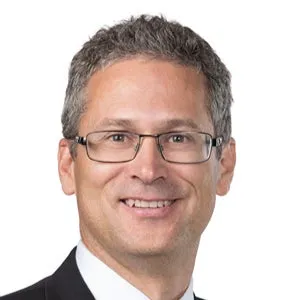
Phillip Halverson, Partner at EY
Phillip is a Partner at EY, specialising in general insurance. For the last several years, Phillip has worked closely with the NSW State Insurance Regulatory Authority, assisting SIRA in their regulation of the NSW workers compensation system. Phillip has a deep interest in improving the effectiveness of workers compensation systems and hence the outcomes for injured workers

Spencer McCabe, SIRA
Spencer McCabe RN, MSc is a senior executive with over 25 years’ experience in injury management, insurance, and regulation across both the UK and Australia. Currently the Director of Insurer Supervision (Workers Compensation) at the NSW State Insurance Regulatory Authority (SIRA), Spencer leads the oversight of 78 insurers operating in the NSW system. A passionate advocate for system improvement, Spencer brings deep insight into the complexities of workers compensation, regulatory practice, and the human realities behind policy. His unique career journey—from UK rehab case manager to Australian regulatory leader—fuels his commitment to building smarter, fairer ecosystems of support for workers and employers alike.

Chair: Geoff Atkins
The modern era of accident compensation schemes in Australia started in about 1985, 40 years ago. What have we learned since? Geoff Atkins is a shy and retiring actuary (well, if not shy, he is at least retiring at the end of 2025), who has worked on and observed the many changes over this period. In this session, Geoff will share the highlights and lowlights of the period, with a focus on the lessons that he has learned and the topics that can only be described still as a lesson in progress.
Finity led a collaboration between nine injury and disability schemes across Australia and New Zealand to pool data and reveal deeper insights into this assumption. This resulted in the first comprehensive trans-Tasman study of mortality among catastrophically injured participants. This presentation will share the key findings from this unique cross-jurisdictional effort, shedding light on mortality trends which have important implications for projecting participant life expectancies and assessing scheme costs. Join us for a session that demonstrates the power of collaboration!

Aaron Cutter, Finity Consulting
Aaron has 30+ years’ experience in accident and disability insurance including ten years as the external Scheme Actuary for Lifetime Support Authority and eight years working at the Transport Accident Commission in Victoria. He is an expert in accident compensation schemes across reserving, pricing and capital management particularly in motor injury insurance (CTP, no fault and catastrophic injury). Aaron is currently LSA’s, TAC’s, NIISQ’s and ACT LTCSS’s Scheme Actuary. As Finity’s lead on COVID-19 advice and modelling he provided case and hospitalisation number projections and mobility trend analysis for NSW, Vic, Qld and New Zealand health departments/ministries. He has extensive experience providing advice in relation to big data, analytics and statistical insights to compensation schemes, insurers, regulators and government departments and agencies. He leads the Actuaries Institute Data Science Education Faculty and actively contributes to Finity’s IP development in this space.
Roel Verbelen, Finity Consulting
Roel Verbelen is a Senior Consultant at Finity and holds a PhD in Statistics and Actuarial Science. He specialises in applying advanced statistical and machine learning methods to deliver analytical insights in complex domains. Roel has supported a range of government and insurance clients across injury and disability contexts, including workers compensation pricing and modelling injury risk for prevention strategies. He has also developed predictive models for injury compensation claims using large language models, significantly improving the identification of common law lodgements from free-text case notes. Most recently, he led the mortality modelling in a trans-Tasman study of catastrophically injured participants, supporting the development of actuarial benchmarks to inform scheme valuations and long-term projections.
Chair: Arie van den Berg
This presentation makes the case for a core set of cross-scheme evidence-based design principles for justice that should be considered by scheme architects, administrators and stakeholders. Drawing on evidence from a review of existing schemes, innovations and research in dispute resolution, social psychology, service design and health services research, the paper explores tensions between competing priorities and evidence underpinning the principles. It also advocates for a broader concept of ‘scheme design’ than we commonly see in compensation schemes: we argue that designing for justice entails not just the substance of the rules but how they are made, communicated, operationalised and evaluated. The proposed principles are relevant to the development of new schemes, as well as the ongoing monitoring and review of established schemes and the distribution programs used in class action settlements.
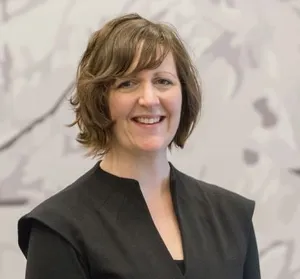
Genevieve Grant
Chair: Tim Lane, ACTUARIAL MANAGER WI Workers Insurance Commercial and Personal Injury
In injury compensation schemes, managing customer interactions, especially during complex and sensitive situations, poses significant challenges. Allianz Australia identified that their existing processes were not sufficiently addressing customer needs, leading to lower customer satisfaction and suboptimal Return to Work (RTW) outcomes. The need for a more person-centred approach to customer management became evident, as did the necessity for better tools and training for Case Managers to handle these interactions effectively.
Solution
To address these challenges, Allianz Australia implemented the Enriching Customer Connections (ECC) initiative. This comprehensive program focuses on three primary strategies:
1. Enhancements to Key Liability and Early Contact Letters: By reimagining the language used in these communications, the ECC program encourages customers to take an active role in their recovery, fostering empowerment and transparency.
2. Face-to-Face Training: Training sessions for Customer Care Consultants are designed to support customers in building resilience and handling difficult interactions with empathy and consistency.
3. Decision-Based E-learn Training: This virtual e-learn guides Customer Care Consultants through best practice conversation pathways, equipping them to manage challenging conversations effectively.
The independent appraisal conducted by Finity Consulting evaluated the impact and effectiveness of the ECC intervention. The evaluation found that the ECC initiative led to improved customer service, enhanced RTW rates and reductions in internal reviews.
Opportunity for Industry
The ECC program serves as a model for other organisations in the insurance industry aiming to improve customer interactions and achieve better business outcomes. By adopting similar strategies, companies can enhance their customer service, improve RTW outcomes, and reduce operational inefficiencies. This presentation will share key insights and methodologies from the ECC initiative focusing on person-centred approaches, effective blended learning and robust evaluation methods

Michael McLean, Finity Consulting

Lisa Thompson, Allianz
Lisa has a diverse background in nursing, financial economics and injury project management. She has worked with Allianz for the last 5 years in Compulsory Third Party roles focused on business development to improve the customer experience and claims management processes.
Rohit Mandanna, General Manager, Strategic Delivery, NSW Lifetime Care Schemes (NSW LTCS) and Lifetime Support Authority (LSS SA) and NDIA
Rick Howe

Chair: Ash Evans, Principal, Taylor Fry
Ash is a Principal at Taylor Fry, with almost two decades of experience in the injury schemes and public health sectors. He has been the scheme actuary for Comcare since 2017 and for the South Australian CTP Insurance Regulator since 2021. With a particular focus on the impacts of psychological injury and its management, Ash has deep expertise in providing mental health insights to support decision makers with a robust evidence base as they develop and review scheme initiatives.

Dr Kate Conroy, Adjunct Professor, Queensland University of Technology
Dr S. Kate Conroy (née Devitt) is a leading global expert in responsible AI and trusted autonomous systems in military and civilian domains and national expert in AI assurance in government. She is currently AI Safety and Assurance Advisor for the Queensland Government and Responsible AI Lead for the Royal Australian Air Force (Specialist Capability Officer Reservist). Dr Conroy has a PhD in philosophy (epistemology, applied ethics) and graduate certificate in cognitive science, Rutgers University NJ USA and a BA (Hons), Melbourne University. She is Adjunct Professor QUT Centre for Robotics, Queensland University of Technology and Adjunct Associate Professor Human-Centred Computing, University of Queensland. She is one of '100 Brilliant Women AI Ethics 2023' and '50 Women in Robotics You Need to Know About 2021'.
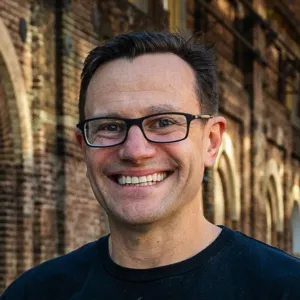
Wade Tubman, AI Solutions, Quantium Health
Wade Tubman is Executive for AI Solutions at Quantium, Australia's largest analytics and AI company, where he drives enterprise AI transformation for organisations across financial services, retail, insurance, and the public sector. An actuary by background, Wade has spent over 15 years at the intersection of data, analytics, and business outcomes. He focuses on the evolution from traditional business intelligence to AI-driven decision support - moving organisations beyond more reports to systems that actively augment how decisions get made. A regular speaker at industry forums, Wade is known for translating cutting-edge AI possibilities into practical strategies that executives can actually execute. His philosophy is straightforward: the best AI solutions bring together human expertise and artificial intelligence to create measurable impact, not replace one with the other.

Tim Johnson, Head of Intelligent Solutions Delivery, Suncorp Group
Tim Johnson has been with Suncorp for over 19 years and led operational teams and large technology programs for most of that time including a short stint as the Insurance CFO. For the past 5 years has lead the Group Intelligent Solutions Delivery Team supporting business teams across the enterprise to automate and augment processes and decisions. Prior to Suncorp and a few years consulting Tim spent 14 years in the Australian Army as a Combat Engineering Officer. Tim graduated from the Australian Defence Force Academy with a Bachelor of Science and later in his career completed his MBA through Deakin.

Plenary program
View the full plenary program
The 2025 Injury and Disability Schemes seminar boasts a leading keynote and plenary program. Explore it in more detail.
